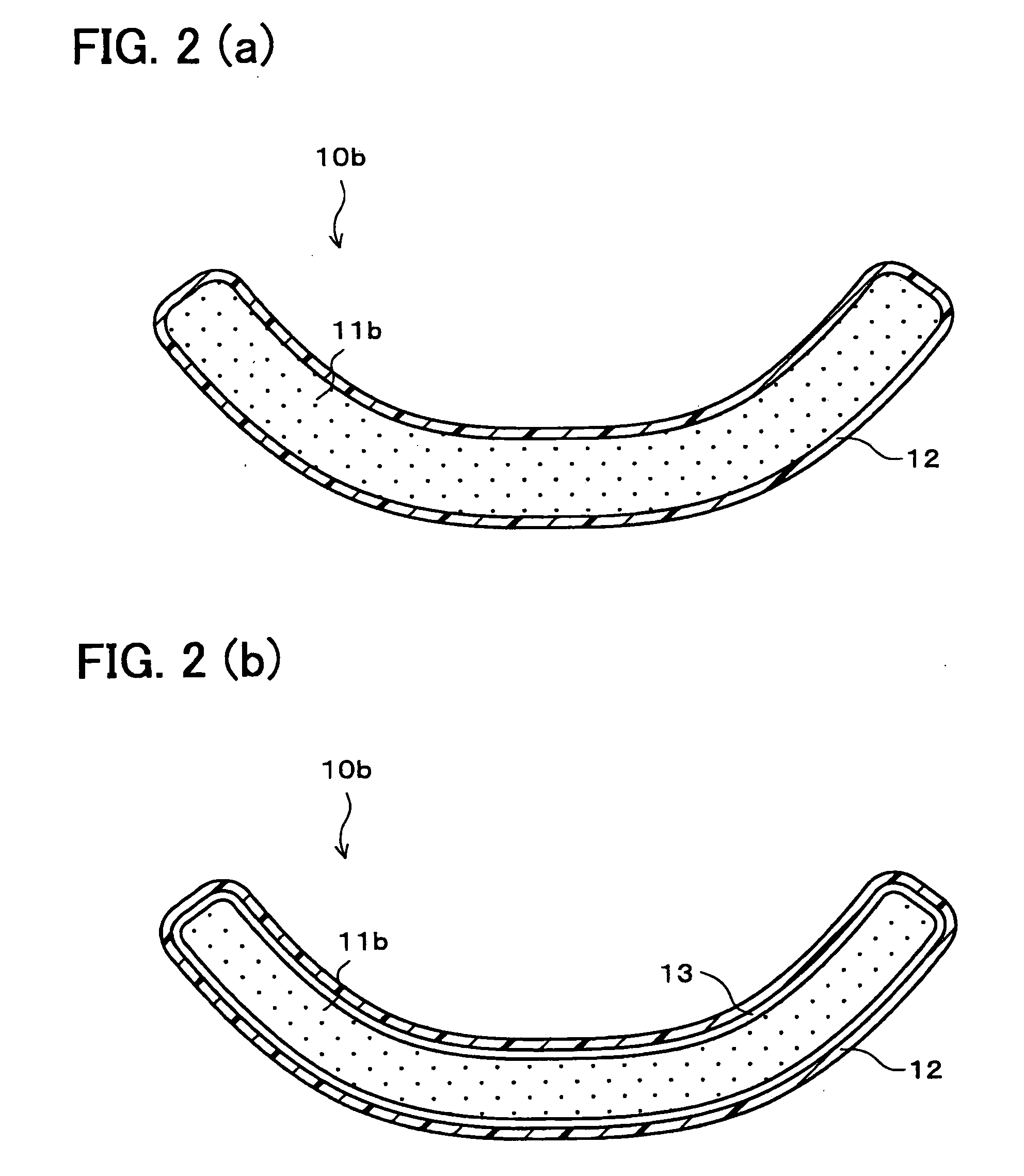Biodegradable molded article
a molded article and biodegradable technology, applied in packaging, climate sustainability, wood working apparatus, etc., can solve the problems of inability to bury the molded article, damage to the incinerator by the plastic molded article, and the inability to use the disposable molded article as the molded article, so as to prevent the reduction of strength, improve physical strength, and be sufficiently water resistant
- Summary
- Abstract
- Description
- Claims
- Application Information
AI Technical Summary
Benefits of technology
Problems solved by technology
Method used
Image
Examples
example 1
[0358]First of all, 30.0 grams of starch as the main ingredient, 7.0 grams of coniferous virgin pulp as water-insoluble fiber (strength adjusting agent), 7.0 grams of calcium carbonate as strength adjusting agent, 0.2 gram of guar gum as stabilizer and strength adjusting agent, 55.8 grams of water were mixed to prepare 100 grams of dough molding material. In this example, only high-amylose starch (corn starch containing 60% of amylose) was used as starch.
[0359]Next, in the aforementioned method 1 of the simultaneous attaching method the above molding material as the molding material 14, the biaxially stretched modified polyester film (50 μm thick) as the coating film 12, and the metal mold 20a shown in FIGS. 5 (a) and 5 (b), were used to manufacture the bowl-shaped container 10a. As for the heating method, both external heating to heat the metal mold 20a by an electric heater and internal heating by high-frequency dielectric heating were used. Also, in the external heating and inter...
example 2
[0361]The bowl-shaped container 10a was manufactured in the same way as example 1 except that a mixture of 25 weight % of potato starch and 75 weight % of high-amylose starch (corn starch containing 60% of amylose) is used as starch instead of high-amylose starch.
[0362]Moisture absorption strength of the resultant bowl-shaped container 10a was assessed in the aforementioned method. The result is shown in table 1.
example 3
[0363]The bowl-shaped container 10a was manufactured in the same way as example 1 except that a mixture of 40 weight % of potato starch and 60 weight % of high-amylose starch (corn starch containing 60% of amylose) is used as starch instead of high-amylose starch.
[0364]Moisture absorption strength of the resultant bowl-shaped container 10a was assessed in the aforementioned method. The result is shown in table 1.
PUM
| Property | Measurement | Unit |
|---|---|---|
| temperature | aaaaa | aaaaa |
| temperature | aaaaa | aaaaa |
| temperature | aaaaa | aaaaa |
Abstract
Description
Claims
Application Information
 Login to View More
Login to View More - R&D
- Intellectual Property
- Life Sciences
- Materials
- Tech Scout
- Unparalleled Data Quality
- Higher Quality Content
- 60% Fewer Hallucinations
Browse by: Latest US Patents, China's latest patents, Technical Efficacy Thesaurus, Application Domain, Technology Topic, Popular Technical Reports.
© 2025 PatSnap. All rights reserved.Legal|Privacy policy|Modern Slavery Act Transparency Statement|Sitemap|About US| Contact US: help@patsnap.com



